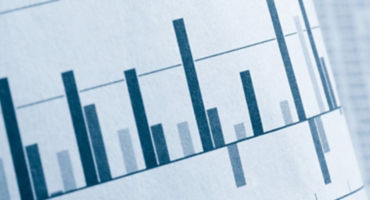Skip to main content
- Funds
- Insights
- Capabilities
- About Us
- My Account
The views expressed are those of the author at the time of writing. Other teams may hold different views and make different investment decisions. The value of your investment may become worth more or less than at the time of original investment. While any third-party data used is considered reliable, its accuracy is not guaranteed. For professional, institutional, or accredited investors only.
Inflation is quickly becoming top of mind for many as everything from ice cream to cars gets more expensive. Investors are beginning to recognize that we’re experiencing the highest inflation levels in 40 years. In our view, we may be entering a market that could be quite favorable for inflation-hedging assets broadly and commodities, in particular. Critically, this environment is coming on the heels of a decade or more of institutions deallocating from inflation-sensitive areas.
Commodities markets were up roughly 27% in 2021, nearly mirroring the performance of the S&P 500 Index (up 28%). But a key differentiator is what may be ahead at this point in the economic cycle. The US Federal Reserve has signaled it is likely to begin raising rates and historically, this environment has favored inflation-hedging assets like commodities relative to equities and fixed income.
Furthermore, commodities price inflation is fueling a virtuous cycle of opportunities, bolstering the asset class’s case as an inflation hedge. For example, energy tightness is driving up energy prices, which are a key input into metals production, which itself becomes a higher-cost input into energy production.
Importantly, we believe several supply and demand factors are also driving a structural and cyclical opportunity in commodities markets.
Commodities inventories today — from energy to agriculture to metals — are at or near their lowest points since at least 1990 (Figure 1). Falling inventories signal that supply is running far behind demand — and that is despite demand not yet fully recovering from pre-COVID levels.
With inventories as low as they are, markets either need demand to be destroyed or supply to respond. However, outside of a recession or a severe shock to Chinese economic growth, demand is likely to continue to grow. Moreover, the lack of supply response is a key reason we are structurally positive on the commodities cycle. Three major factors are contributing to this environment:
The current lack of supply response is despite the significant price inflation mentioned above, with several commodities now at seven- to 10-year highs. In many ways, the last ten years may have lulled investors into a sense of complacency that production would respond if prices increased. But today, producers are maintaining strong discipline, driving supply to be as inelastic as it has been in a long time.
We believe these factors signal significant potential for commodities in this environment.
Critically, the low inventories noted above have helped to support a substantial change to commodities roll yields. After a decade of persistently negative roll yields, the futures curves of most commodities have shifted into backwardation. The asset class is now generating a positive single-digit implied roll yield. With this roll yield, commodities investors are able to be more patient as they’re no longer required to pay a cost to maintain exposure. This is a major change compared to the last decade and is particularly compelling given the potential for commodities to help tackle inflation in the coming years.
Attractive supply/demand dynamics, robust price inflation, and meaningfully positive roll yields are key indicators that the commodities market is powered by several structural tailwinds. In our view, given commodities’ historical role as an inflation hedge, the short- and long-term opportunities in this asset class are particularly exciting as investors look to navigate rising inflation expectations.

Finding durable value amid shifting currents
Continue readingSustainable commodities: Rethinking investment strategies for a changing climate
Continue readingInvesting in 2026: prepare for inflationary growth
Continue readingRational exuberance: Will the bulls keep running?
Continue readingURL References
Related Insights
Stay up to date with the latest market insights and our point of view.

Monthly Market Review — August 2024
A monthly update on equity, fixed income, currency, and commodity markets.

Financial Market Review: Third quarter 2022

Monthly Market Snapshot: September 2022
A monthly update on equity, fixed income, currency, and commodity markets.



URL References
Related Insights
Monthly Market Review — October 2025
Continue readingBy